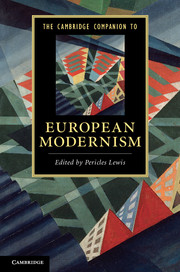11 - Scandinavia
from PART II - PERIPHERAL MODERNISMS
Published online by Cambridge University Press: 28 September 2011
Summary
If one judges solely from contemporary accounts, the central role of Scandinavian authors in European modernism can be in little doubt. To name but a few examples, in 1897 Henry James proclaimed Henrik Ibsen the greatest living author, while three years later the young James Joyce wrote his first publication on the Norwegian dramatist's final play. Joyce, moreover, learned Norwegian so that he could read the master in the original, just as Rainer Maria Rilke taught himself Danish in order to study his beloved novelist and poet J. P. Jacobsen. Jacobsen was also an object of adulation for Robert Musil, Sigmund Freud, and Stefan George, among others; and his compatriot, Herman Bang (who was in turn highly esteemed by Thomas Mann) was central to the development of Lugné-Poë's experimental theatre in France. Ibsen's The Master Builder provided the foundation for the Belgian symbolist Maurice Maeterlinck’s theory of modern tragedy, even as Bernard Shaw and William Archer in England vigorously championed the revolutionary realism of that same play. In 1924, the American Eugene O’Neill named “among the most modern of moderns” the Swede August Strindberg, whom Joyce had imitated in his celebrated Circe episode, and whose influence can be felt with equal force in expressionist drama and epic theater, Antonin Artaud and Samuel Beckett's Waiting for Godot.
- Type
- Chapter
- Information
- The Cambridge Companion to European Modernism , pp. 191 - 203Publisher: Cambridge University PressPrint publication year: 2011
- 2
- Cited by

